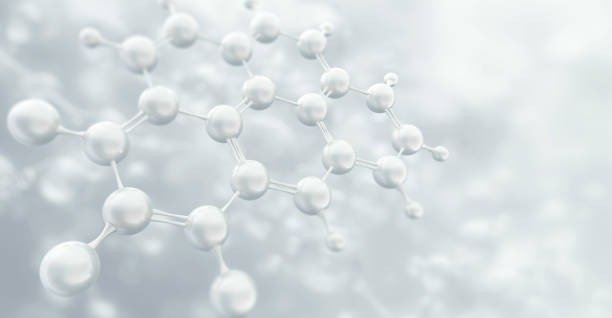Peptide research has progressed from lifesaving discoveries in the early 20th century to a multi-billion dollar global industry driving advances in metabolic health, cancer therapy, regenerative medicine, and performance science. What began with insulin has expanded into more than 80 approved peptide drugs worldwide, with hundreds more under investigation.
This article traces the key milestones in peptide science — from the dawn of discovery to today’s cutting-edge applications.
The Discovery Era (1900–1950)
The Insulin Revolution
The modern peptide era began in 1921, when Frederick Banting and Charles Best, working under John Macleod at the University of Toronto, successfully isolated insulin from dog pancreas. This breakthrough transformed type 1 diabetes from a fatal condition into a manageable one, saving millions of lives.
In 1951, Frederick Sanger sequenced insulin’s amino acid structure, making it the first protein to be fully sequenced. His Nobel Prize-winning work laid the foundation for understanding how peptide structure determines function — knowledge that continues to shape peptide design today.
Early Hormone Discoveries
Following insulin’s success, researchers identified numerous regulatory peptides, including secretin, gastrin, oxytocin, glucagon, vasopressin, ACTH, and cholecystokinin (CCK). Each discovery revealed new ways the body uses peptides as molecular messengers, opening therapeutic possibilities across metabolism, digestion, stress response, and reproduction.
The Foundation Era (1950–1980)
Structural Breakthroughs
In 1969, Dorothy Hodgkin determined the crystal structure of insulin, providing the first three-dimensional view of a peptide. This structural insight became a blueprint for rational drug design, guiding efforts to modify peptides for greater stability, potency, and selectivity.
Advances in Synthesis
By the mid-20th century, chemical and recombinant DNA techniques made it possible to produce peptides at scale. Insulin became the first protein both chemically synthesized and manufactured via recombinant technology, proving peptides could move from biological extraction to reliable synthetic production.
The Growth Era (1980–2000)
Growth Hormone Research
The 1980s and 1990s marked rapid growth in peptide therapeutics. Scientists developed growth hormone-releasing peptides (GHRPs), which stimulated natural growth hormone release without direct hormone administration. This approach offered key advantages: mimicking natural pulsatile release, reducing side effects, and enhancing long-term safety.
Manufacturing Progress
Solid-phase peptide synthesis (SPPS) and recombinant systems revolutionized production, making complex peptides affordable and accessible for research and clinical use. These advances set the stage for the modern peptide industry.
The Modern Era (2000–Present)
Expanding Therapeutic Horizons
The 21st century has seen a surge in peptide drug development, driven by advances in synthesis, modification, and delivery systems. Key innovations include:
- Chemical modifications that improve stability and bioavailability.
- Extended-release formulations reducing injection frequency.
- Oral and transdermal delivery systems overcoming traditional barriers.
- AI-assisted design enabling precise prediction of peptide folding, activity, and receptor targeting.
Blockbuster Successes
The past decade has produced several landmark approvals:
- Semaglutide (Ozempic®, Rybelsus®) – a GLP-1 receptor agonist transforming diabetes and obesity management, with extraordinary global sales.
- Tirzepatide (Mounjaro®) – a dual GIP and GLP-1 agonist showing unprecedented weight-loss outcomes.
- Retatrutide – an investigational triple agonist (GLP-1, GIP, glucagon) that may surpass even Tirzepatide in fat loss and metabolic control.
These compounds demonstrate the enormous potential of incretin-based peptide therapies.
Today’s Research Frontiers
Regenerative Medicine
- BPC-157 – studied for tissue repair and gut health.
- TB-500 (Thymosin Beta-4 fragment) – investigated for wound healing and recovery.
- GHK-Cu – explored for skin rejuvenation and hair growth.
Metabolic and Longevity Research
- Growth hormone secretagogues (Ipamorelin, CJC-1295, Sermorelin) support natural hormone regulation and body composition studies.
- Epitalon and other longevity peptides are being examined for their influence on cellular aging.
Neurological Applications
- SEMAX and Selank – Russian-developed peptides under investigation for cognitive enhancement and stress resilience.
- Cerebrolysin – used in neurological research for stroke recovery and neurodegeneration.
Market Growth and Industry Evolution
The global peptide therapeutics market was valued at over USD 117 billion in 2024 and is projected to grow at a compound annual rate of more than 9% through 2033. The largest growth segments include metabolic disorders (diabetes and obesity), oncology, cardiovascular health, and regenerative medicine.
North America currently leads with the largest market share, but Europe and Asia-Pacific are rapidly expanding as manufacturing technologies and research infrastructure improve.
Looking Ahead
Nearly 100 peptide drugs are now approved worldwide, and hundreds more are in development. Future directions include:
- Oral delivery breakthroughs to increase convenience.
- Combination therapies that stack peptides for synergistic benefits.
- Targeted delivery systems directing peptides precisely to desired tissues.
- AI-driven discovery pipelines accelerating innovation.
As peptide research accelerates, the boundary between laboratory investigation and real-world therapeutics continues to blur.
Conclusion: A Century of Progress
From insulin’s discovery in 1921 to today’s next-generation incretin agonists, peptide research represents one of modern medicine’s most remarkable success stories. In just over a century, peptides have evolved from lifesaving hormone replacements to highly targeted therapeutics capable of addressing complex diseases, supporting regeneration, and optimizing human performance.
With advances in synthesis, delivery, and design, the coming decades promise an even greater expansion of peptide applications across medicine, wellness, and longevity science. The peptide revolution is far from over — it is only just beginning.
This article provides historical and educational information about peptide development for research and informational purposes. The field continues to evolve rapidly, with new discoveries and applications emerging regularly.




